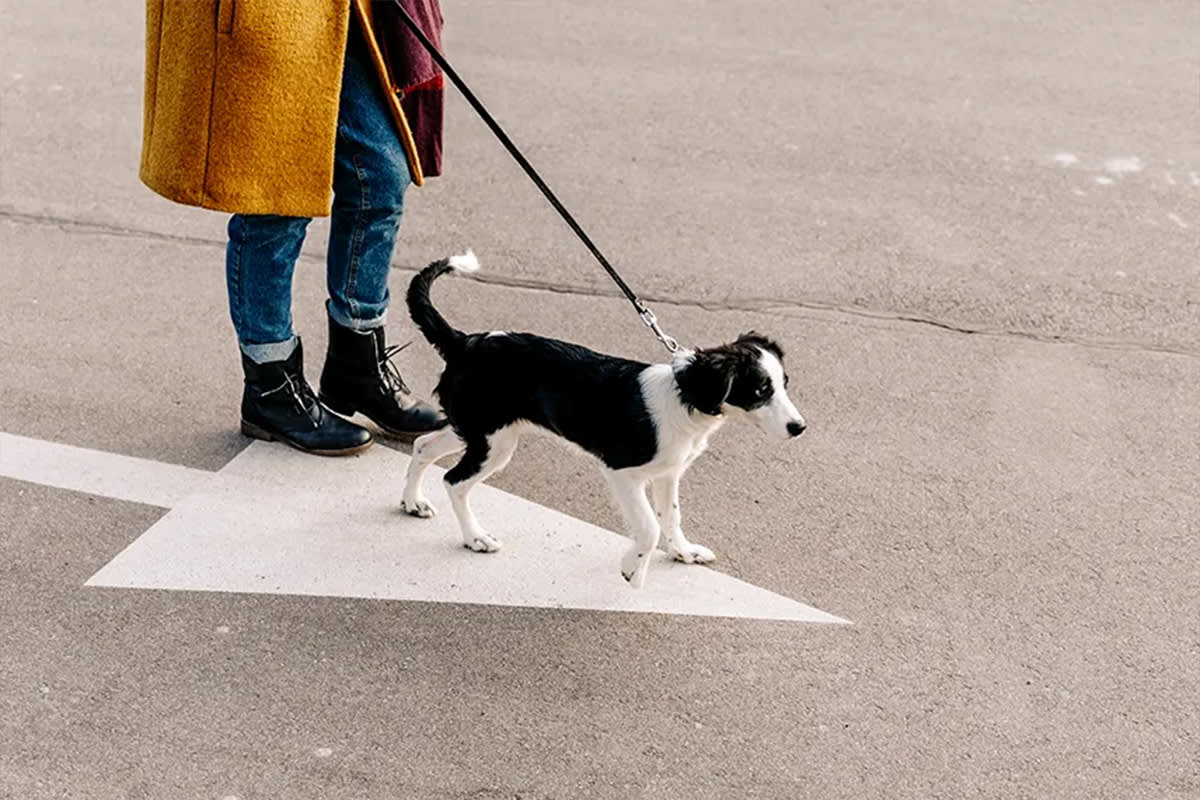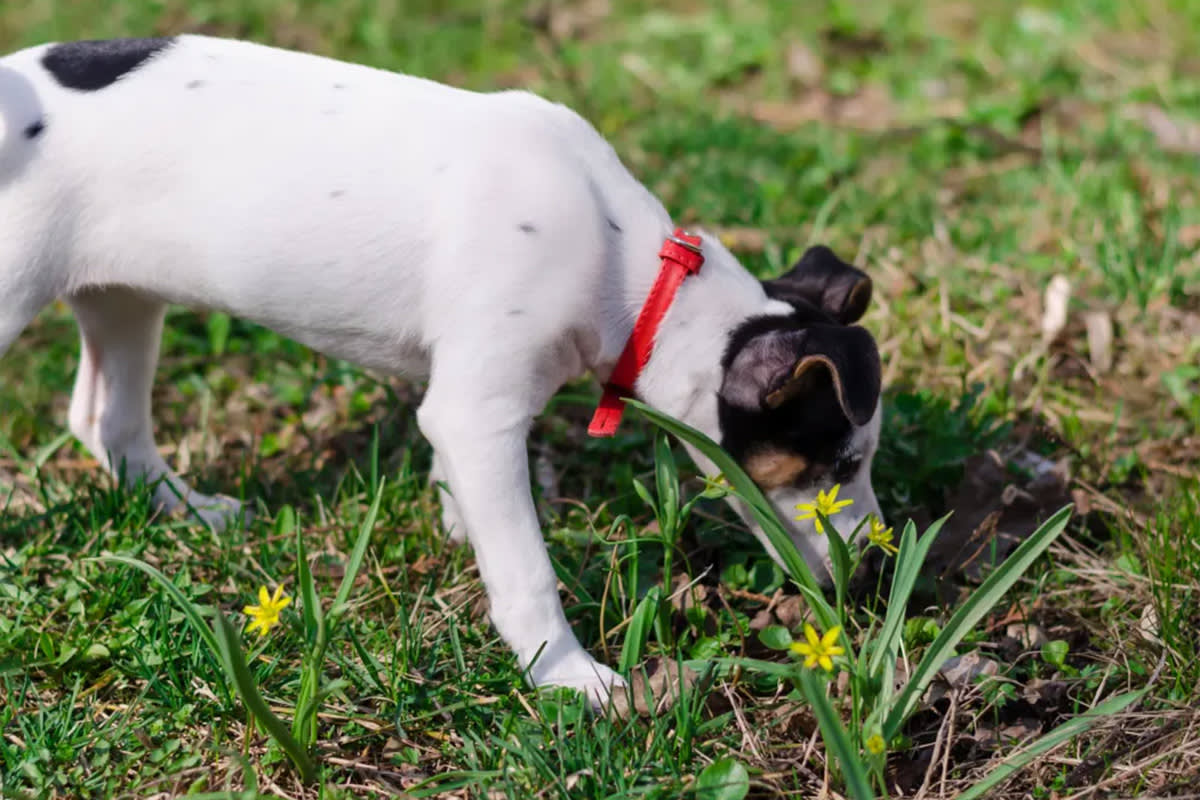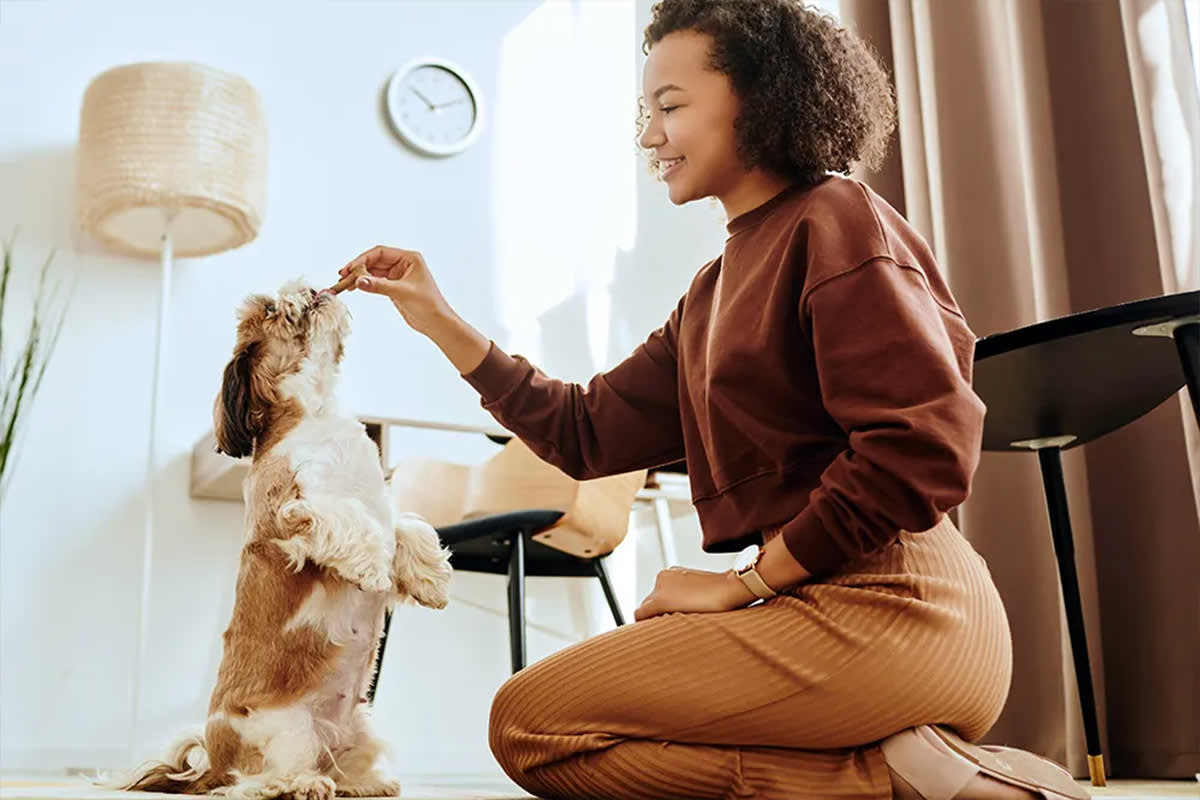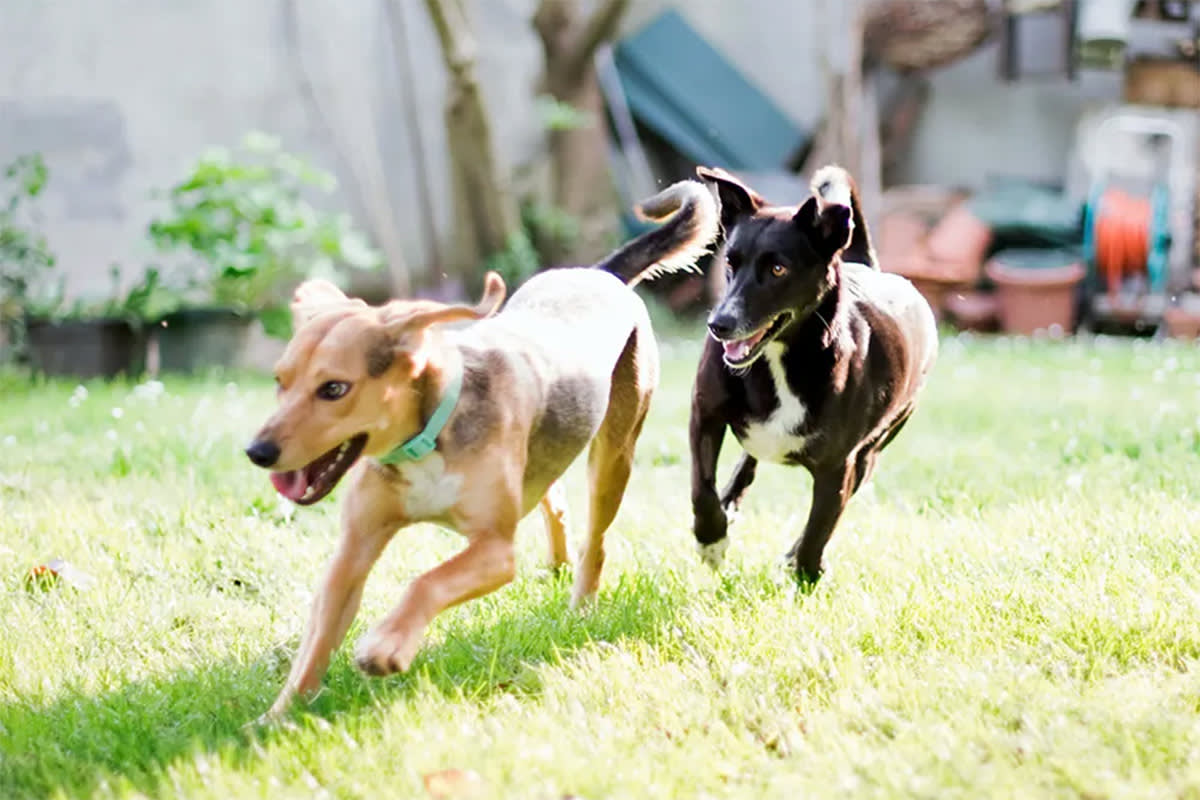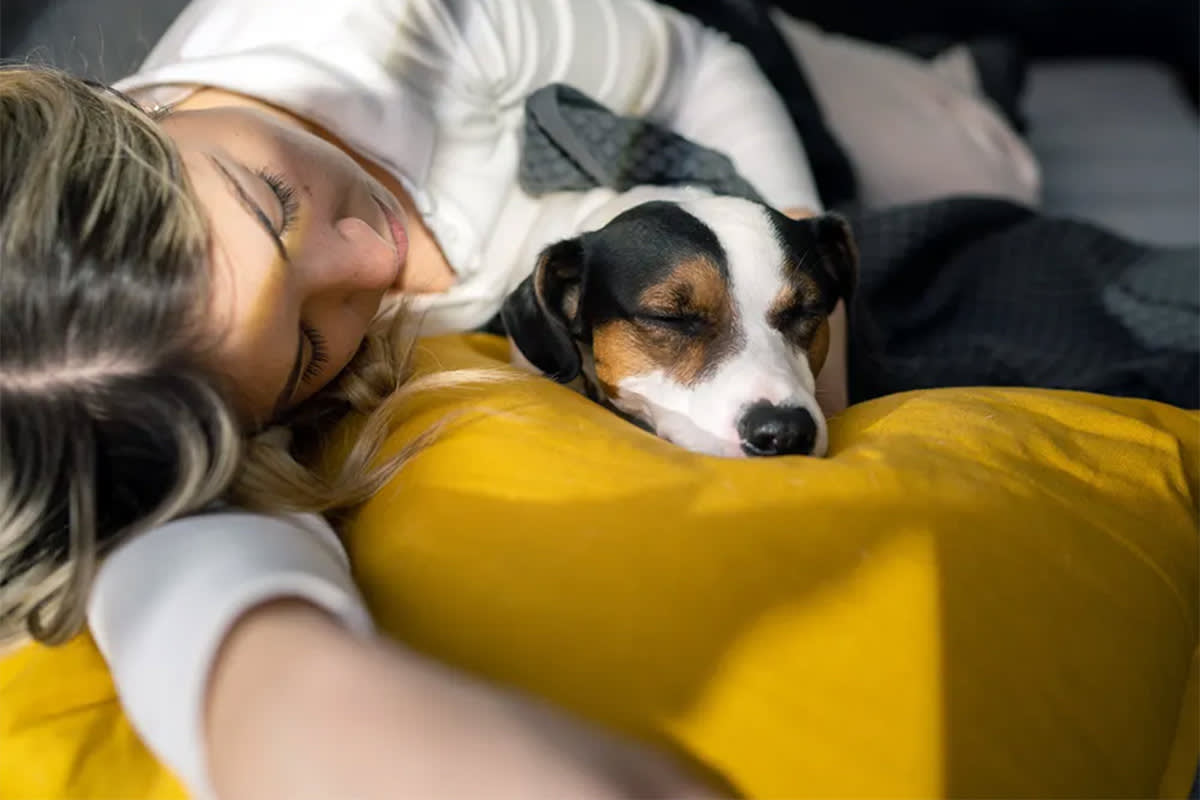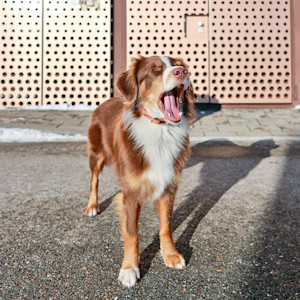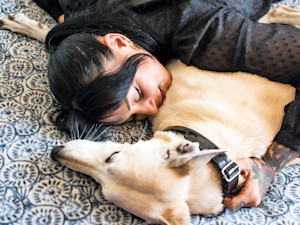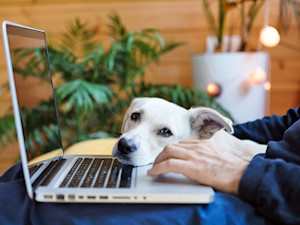12 Things Your Dog Wishes They Could Ask You For
Tell me what you want, what you really, really want.
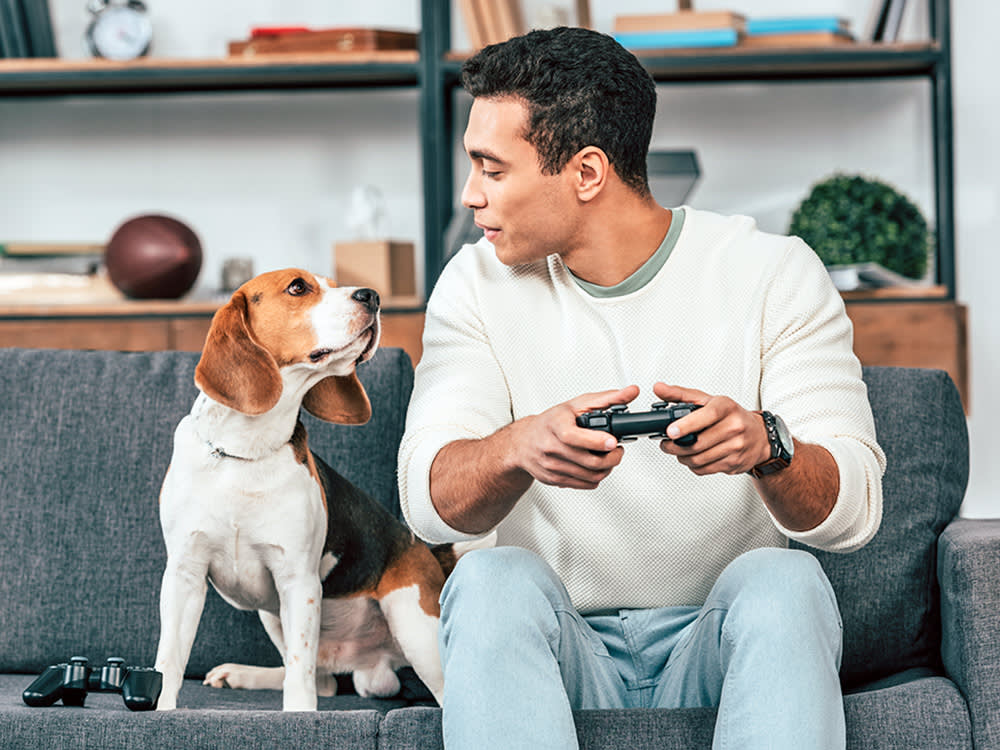
Share Article
Being the caring, conscientious, and all-around wonderful pet parent that you are, you’re probably already doing a lot to ensure your dog has the best life possible. You’re not just feeding, walking, and loving on them. You’re playing with them, buying them special toys and beds and little rubber booties so their paws don’t get wet in the rain. You’re rushing home to be with them after work, taking them on little trips, and getting them massages to help relieve pain in their arthritic hips.
But is it enough? What more could they possibly want? Gourmet meals? Their own dedicated playroom? A saltwater pool?
Generally speaking, a dog’s wants and needs are actually much simpler than all that. “I think a lot of people have really high expectations for how their dogs will be — how they will think and act and what they will want,” says Annie Grossmanopens in new tab, certified dog trainer and author ofopens in new tab How to Train Your Dog With Love and Science.
Maybe that’s because we all grew up with TV dogs like Lassie, Wishbone, Snoopy, and, more recently, Bluey — dogs who act like people in little furry bodies. So, even though we know dogs are very different from us, we have a tendency to anthropomorphize them.

And we often project our own wants and needs onto them, rather than seeing the world from their perspective. “It can be helpful to think of your dog as an alien, forced to live in an environment they didn’t choose and know very little about,” Grossman says. Rather than wanting you to get them more or better stuff, “they mostly just want you to help them feel good about this world and their place in it.”
And, fortunately, a dog will always tell you what they want. Not in words, of course, but through body language and behavior. Even behaviors you might initially see as “bad” — barking, chewing on furniture, lunging or snapping at people or other dogs — are all indications of what your dog wants and is not currently getting. And, more likely than not, you should be able to give them whatever that is.
What your dog really wants
A longer leash
“It’s not natural for a dog to walk within a two-foot radius of us,” says Grossman, “let alone right beside us. Rather than the leash being a tool of control, it should really just be there for safety and in case of an emergency.” Grossman says that, ideally, your leash should be as long as possible and should hang with a nice curve in it (i.e., not be pulled taut). It should also be lightweight, so that it is as unobtrusive to the dog as possible.
“I think most people could also benefit from switching to a hands-free leash,” she says. “One that loops around the waist or over the shoulder and across the chest. Otherwise, if the leash is in your hand, there’s always going to be a tendency to pull on it.”
More space
Sometimes dogs, like humans, just want to be left alone, and they will often let you know as much through their behavior and body language. For instance, if you approach a dog, and they look at you out of the side of their face or they lick their nose or lips or growl, what they are asking you for is space.
If you’re out for a walk, and you notice your dog engaging in these behaviors with strangers or other dogs, intervene on their behalf. Tell people they don’t want to be approached and lead them to a less crowded area. When you do this, don’t tug on their leash but step between them and whatever is making them wary and then gently guiding them away.
Try to be aware of the signals they are giving you at home as well. “Rare is the dog that will attack out of nowhere,” Grossman says. “They are not sociopaths. They don’t just go from being fine to being vicious; they give a lot of hints.”
At the same time, though, remember that just because your dog wants a little more space, it doesn’t necessarily mean they don’t want to be near you or near where the action is taking place. They just may not want to be personally engaged at that moment. “Make sure they have a comfy place where they can be alone,” Grossman says. “This could be a dog bed or a crate or a whole room. The point is that it is a space where they can just be without being asked to do anything.”
A sniffari
“Dogs need a lot of sniffing time,” says Sarah Rutten, professional dog trainer and author of opens in new tab The Canine Perspective: Using Force-Free Methods to Unleash Your Dog’s Pawtential. “Their brains are built to sniff. Their faces, too. And their noses are so much more sensitive than ours. Sniffing is how they explore and investigate the world around them. It’s important not only for their minds, but also for their overall health and wellbeing. And yet, people often give their dogs inadequate sniffing time, especially when they are out on a walk.”
A walk is not a pet parent’s time to get their steps in for the day. It’s the dog’s time to get out of the house and explore the world around them, go to the bathroom, and get in a little exercise. Denying your dog adequate time to sniff and explore at their own pace and in their own way means denying them an essential part of their experience.
Sometimes a quicker, less satisfying walk is unavoidable, but you can make up for that by taking them on a nice long sniffari when time allows. Rutten suggests taking your dog to an open space like a park, putting them on a long leash, and just letting them sniff and explore to their heart’s content. Let them choose where to go and sniff what they want for as long as they want while you just follow along.
“Sniffaris are great for really hyperactive dogs, too,” Rutten adds. “The act of smelling and processing the world is incredibly stimulating and fulfilling to them and walking around with their nose to the ground is more physically taxing than you might think.”
A chance to sniff your mouth and butt
This one might seem a little weird at first, but, per Grossman, it can be especially helpful when meeting new people. “Sniffing mouths and butts is something dogs do with each other, so allowing them to do it with you lets them get to know you on their own terms.” Don’t just stand there with your mouth and butt high above the dog. Get down on their level, and let them approach you and gather whatever information they need to feel comfortable interacting with you.
And if you are introducing your dog to someone new, remember that this can be a highly stimulating and even stressful situation for your dog, so try to give them a little grace in that moment and just let them be how they are going to be. “Some people get really caught up in the importance of having their dog sit or follow other commands when meeting someone new, but it’s really not necessary and could end up just stressing them out more,” Grossman says.
More rewards and treats
In general, you want to reward good behavior rather than punishing bad. That means that when your dog is being calm, you give them a treat. When they are sitting patiently, you give them a treat. Any time you see them doing something you like, give them a treat.
And it doesn’t have to be a big treat. It could just be a single piece of their usual kibble. “If you just dump their food in a bowl twice a day, you are missing out on so many opportunities to teach them,” Grossman says. “Rewards should be handy, plentiful, and given often. And if that means you feed them all their kibble one piece at a time throughout the day or on a long way, that’s OK. They’ll be learning what behaviors you like and getting fed at the same time.”
More enrichment at meal time
Any chance to give your dog more enrichment, aka mental stimulation, is worth jumping on. Meal time is a huge part of their day. So, instead of just dumping their food onto a plate, use a lick mat or another feeding toy. It will slow them down, prolonging meal time and giving them a little extra mental stimulation, which should result in them feeling more calm after they’ve eaten.
Something good to chew on
“I’m a big fan of bully sticks,” Grossman says. “Chewing is another important part of how dogs process the world around them. They are meant to chew.” So, if you see them chewing things they shouldn’t, give them something they should.
A companion dog
Not every dog wants a friend around the house. Some dogs are perfectly happy just being with you. But if your dog loves interacting with other dogs on the street or at the dog park, they might do well with a sibling. Plus, if your lifestyle or job means you need to leave them home alone on a regular basis, Rutten suggests getting a second dog to help pass the time and prevent boredom, stress, and any resulting bad behaviors.
“Certain breeds, like Pugs, which have been bred to be companion dogs, really benefit from having another dog in the house,” Rutten says. “Of course, it’s very individual, but especially if you have a more social breed and you can’t be with it as much as you would like, another dog can help.”
More breed-specific activities
“It’s amazing to me how many people never do any research about their specific dog breed and what they need,” Rutten says. “I will teach a class of 40 or 50 people and ask if anyone has researched their breed and maybe five people will actually raise their hands.” But dogs who have been bred for a specific purpose can often find it acutely stressful not to engage in activities that scratch that inherent itch. “Herding breeds, for instance, need a lot of mental stimulation and exercise,” Rutten says. “Companion breeds need company, and Hounds and Terriers need a job to do.”
At the same time, Rutten urges pet parents to remember that dogs are individuals and may not always act the way we think they should based on breeding alone. So, it’s important to really get to know your dog and let them be who they are.
Clearer boundaries
Establishing clearer boundaries with your dog, being consistent and reliable, will help them navigate the world more easily. This doesn’t mean punishing them when they do things you perceive as bad. It means training them using positive reinforcement.
It means being consistent in your cues and how you interact with them (i.e., not letting them up on the couch sometimes and then insisting they stay off the couch other times). And it means building structures into their days and lives that allow them to relax and know that all of their needs are going to be met.
Teaching them how to relax
If you’ve got a really energetic, easily overstimulated dog who just can’t seem to settle, you might think the best thing you can do is just to exercise them until they are completely pooped. But even if they might enjoy that sometimes, what they really need — what they are asking you for without necessarily knowing it — is to learn how to relax. Without physical exhaustion.
“Rest is an essential need, but it doesn’t come naturally to all dogs,” Rutten says. “This can be especially true with herding breeds, who often need to be trained to just be and not feel like they have to be on all the time.”
To accomplish this, Rutten suggests pet parents utilize the Karen Overall Protocol for Relaxationopens in new tab. “It takes about eight to 10 minutes a day and can feel a bit like watching paint dry, but it will teach your dog to just be calm and still, which is essential for their wellbeing.”
More empathy
If you give your dog nothing else on this list, give them this. Understand that, for dogs, there is no good or bad behavior. That’s not how their brains work. They are simply reacting to the world around them and the signals you, as the most important person in their life, are giving them. Even the smartest dogs are nowhere near as smart as an adult human and their brains don’t work like a human’s, either.
They don’t learn the same way humans do or perceive the world the same way humans do. Remember that and try to approach any interactions with them — especially stressful or emotionally charged ones — with empathy and understanding.
And please, for the love of God, let go of any notion you might have that your dog is “trying to dominate” you. Rutten and Grossman agree that is simply not happening. And insisting that it is, thinking that you need to dominate your dog in order to establish your superiority over them, is only going to harm your relationship.
“Dogs are not sitting around thinking about how they can dominate you,” Rutten says. “Most of the time, they are just trying to get along.” Remember that the next time your dog engages in a behavior you don’t like. You are already in charge, and they know it.
Your dog is lucky to have you as their parent. If you feel equally lucky to have them, try giving them a few (or all) of the things on this list. Your relationship can only improve as a result.

Charles Manning
Charles Manning is an actor and writer based in New York City. In his free time he likes to cook, go swimming at the public pool, volunteer at the LGBTQ senior center, and foster senior and special-needs cats. His work has previously appeared in Cosmopolitan, Elle, Marie Claire, Harper’s Bazaar, Seventeen, and Nylon.
Related articles
![Brown dog outside yawing.]()
10 Surprising Ways You Can Decode Your Dog’s Body Language
All their little movements mean a lot.
![Woman cuddling her dog on the floor at home.]()
Discover Your Dog’s Love Language
Which of these five sounds most like your pup?
Every Dog’s Biggest Need, According to Their Breed
Because those animal instincts run deep.
Can Pets Really Have Emotional-Support Items?
From blankets to bikinis.
![Dog looking sad at home on the couch.]()
8 Things You Do That Hurt Your Dog’s Feelings
The worst part: You probably aren’t even aware they’re upset.
![Cute dog trying to get someone's attention.]()
9 Signs Your Dog Wants Your Attention Right Now
They need some cuddles, stat.
